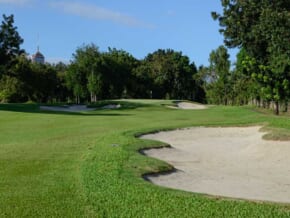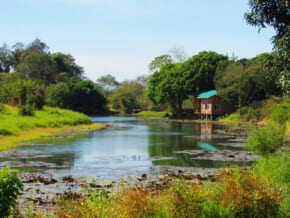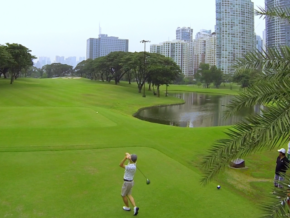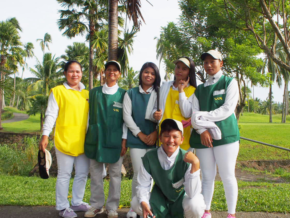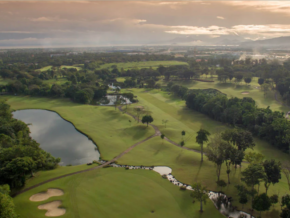JAPAN TRAVEL: A Walk-Through to Nagoya Castle and Hommaru Palace’s History
Every castle in Japan is always worth a visit as it is also a great learning spot about the culture of Japan. One of the famous castles, the Nagoya Castle, is a historic destination which reveals important cultural assets through its structures, exhibits, and collections.
 Nagoya Castle in Spring / IMAGE Nagoya City Government
Nagoya Castle in Spring / IMAGE Nagoya City Government
It can be said that Nagoya Castle has stood the test of time with its 400 years of survival through both natural calamities and world war.
Sustaining injuries caused by the air raids of World War II, Nagoya Castle, and its main Hommaru residential palace, was rebuilt in 2009 and underwent nine years of reconstruction which only ended in 2018.
Originally constructed in 1612 during the Tokugawa Shogunate, Nagoya Castle stands at the center of the former castle town of Nagoya, fortified with reconstructions even up to this day.
Entering the Castle Grounds
Before entering the castle grounds, you and your team may go straight to the Admissions or Ticketing booth where you may purchase your tickets to Nagoya Castle.
 Tickets to Nagoya Castle are priced at a regular rate of ¥500 per person.
Tickets to Nagoya Castle are priced at a regular rate of ¥500 per person.
From here, you may request for a tour guide who may patiently walk you through the majestic castle grounds, filled with spots and narrow streets that bloom with warm colors from the line of maple trees come early winter.

They will also carefully explain the rich history of Nagoya Castle with a smile always at a ready.
The sudden mention of Tokugawa Ieyasu immediately struck a chord: he was an important Japanese shogun who ruled Japan, along with Oda Nobunaga and Toyotomi Hideyoshi.
Today, this National Treasure still stands majestically with its pair of replicated Kinshachi gleaming on top of Nagoya Castle, symbolizing Tokugawa’s “power and money”.

This kinshachi or golden dolphin mirrors the pair found atop the Nagoya Castle. The original kinshachi was made of gold.
Although visitors are currently prohibited to enter the Nagoya Castle due to constructions, tourists may get to enter the equally gorgeous Hommaru Palace in the castle’s southeast.
Hommaru Palace
Hommaru Palace, the residence and the seat of the lord and his government, is a place of huge significance in the Japanese culture. In fact, it was designated as a National Treasure in 1930.
Although it was destroyed in 1945 during World War II, the people’s desire to have it rebuilt was still stronger than ever.
Now, the Hommaru palace is restored using its original materials.
Upon reaching Hommaru Palace, visitors will be oriented on how to go about the place. This includes not bringing any food or drink inside as well as not touching the paintings and other ornaments and decorations therein.

You will also be asked to take your shoes off at the entrance.
Once inside, the distinct sweet smell of Japanese Cypress will invade your senses, taking you back to the Tokugawa Period with all the stories stamped in each of its rooms.

Genkan (Entrance Hall) shows tigers cohabitating with leopards to stun visitors into submission.

Taimenjo (Reception Hall) features toned down hues and landscapes used only by the family of the lord– a strict contrast to the Genkan.

Jorakuden Hall, used for Shogun visitations, glimmers with gold dust, showing luxury. Its ceiling also tells of its resplendence.
The Omote Shoin or the most important room in the palace, for example, was where the feudal lord appeared and where he met with the public.

The prominence of this part of the palace is seen through its curved and decorated ceilings, its built-in desks, large alcove, staggered shelves, paintings of pheasants which symbolize royal authority, and ornate sliding doors where samurais are known to hide back in the time to protect the feudal lord from harm.

Omote Shoin (Main Hall)
Entrance to Nagoya Castle costs ¥500 per person, ¥450 for a group of 30 persons or more and ¥400 for a group of 100 persons or more. Senior Citizen discounts also apply.
Pay Parking is available in front of the Main Gate and the East Gate.
How to get here:
- By public transport: From Nagoya Station, board the Sakuradori Subway Line to Hisayaodori Station, which will take you about 5 mins. From here, board the Meijo Subway Line to Shiyakusho Station before taking the city bus and getting off to Shiyakusho bus stop. After which, take the Me-guru (Nagoya sightseeing route bus) and get off at Nagoya Castle.
Details:
Address: 1-1 Hommaru, Naka Ward, Nagoya, Aichi Prefecture
Operating Hours: 9 am to 4:30 pm (Entrance to the main castle tower and Hommaru Palace until 4 pm)
Contact: 052-231-1700
Admission Fee: ¥500 (Adult); Free for children in Junior High School or younger
Website: www.nagoyajo.city.nagoya.jp (Nagoya Castle General Administration Office)
A version of this appeared in Philippine Primer’s English magazine (Vol. 36).
Featured image grabbed from Nagoya City Government
